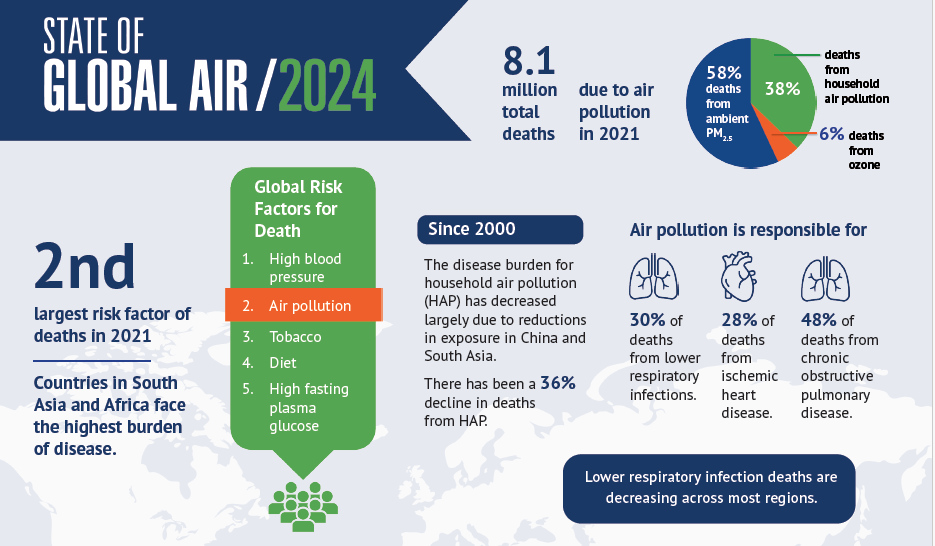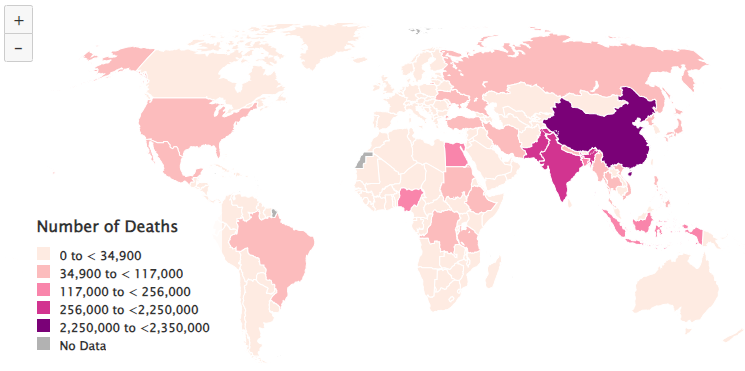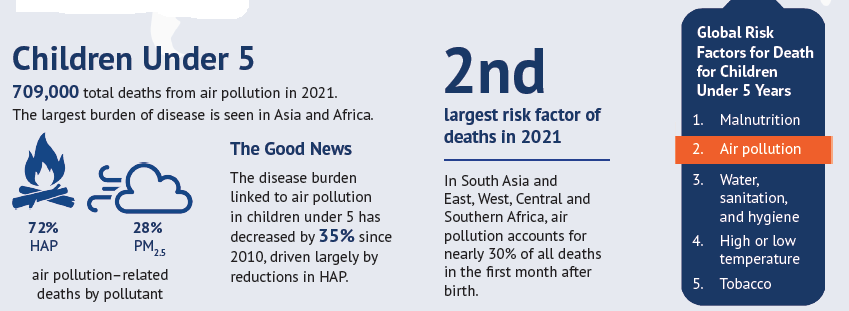7667766266
enquiry@shankarias.in
Recently, the State of Global Air (SoGA) 2024 was released which offers a stark reminder of the significant impacts air pollution has on human health.
WHO data show that almost all of the global population (99%) breathe air that exceeds WHO guideline limits and contains high levels of pollutants, with low- and middle-income countries suffering from the highest exposures.
|
State of Global Air (SoGA) 2024 |
|
What are the key findings of the report?



|
Status of NO2 in Air pollution |
|
|
Status of Ozone in Air pollution |
|
|
Status of PM 2.5 in Air pollution |
|